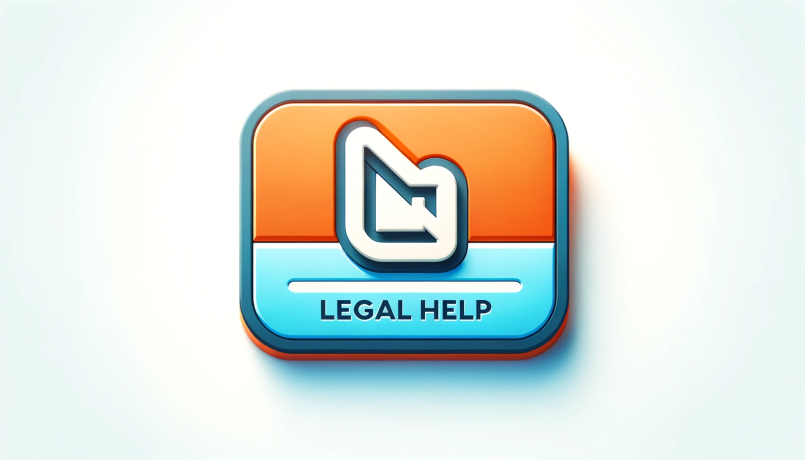
Understanding damages in California civil lawsuits is crucial for maximizing your compensation. From economic to punitive damages, knowing your rights and the legal landscape can significantly impact your case's outcome and financial recovery.
by LawInc Staff
June 25, 2024
If you’re considering filing a civil lawsuit in California, it’s crucial to understand the types of damages you may be able to recover. Damages refer to the monetary compensation awarded to a plaintiff to make them “whole” after suffering harm due to the defendant’s actions or negligence.
This guide breaks down the main categories of damages available in California civil cases, from compensatory to punitive damages, economic to non-economic losses, and more. Learn about statutory damage caps, mitigation of damages, proving your right to recovery, and factors that can impact your ultimate compensation.
Armed with this knowledge, you’ll be better prepared to pursue the full and fair compensation you deserve in your California injury, breach of contract, defamation, wrongful termination or other civil matter.
1. Understand the Different Types of Compensatory Damages
-
- Economic Damages: Tangible financial losses like medical bills, lost wages, property damage, and diminished earning capacity.
- Non-Economic Damages: Subjective, non-monetary losses like pain and suffering, emotional distress, disfigurement, and loss of enjoyment of life.
- Future Damages: Projected economic and non-economic losses you’ll likely incur due to the long-term impacts of the harm suffered.
- Consequential Damages: Indirect but foreseeable losses resulting from the incident, like missing a job interview while injured from an accident.
- Incidental Damages: Extra costs you incur while remedying the situation, like renting a car while yours is being repaired after a crash.
Examples:
-
- Jordan’s $80,000 in hospital bills after a car accident are economic damages he can claim against the at-fault driver.
- The severe depression Amanda developed due to workplace sexual harassment constitutes compensable non-economic damages.
- Noah’s projected future need for $20,000 in physical therapy for his back injury counts as future economic damages.
- When a store’s negligence caused Tamara to slip and miss her best friend’s wedding, those consequential damages were compensable.
- The cost of Marcus’s Uber rides to doctor appointments while his vehicle was being repaired after a crash are incidental damages.
How to Proceed:
-
- Make a detailed list of every penny you’ve spent or lost as a result of the incident (bills, receipts, pay stubs, repair estimates, etc.).
- Journal how the situation has impacted your physical/mental health, relationships, hobbies and overall quality of life.
- Discuss with your doctor your anticipated medical needs and costs due to your injuries and get this in writing.
- Document any opportunities you missed out on due to the incident and the resulting losses (ex: lost job offer, canceled trip, etc.).
- Track all incidental expenses you incur in dealing with the aftermath of the harm done to you (transportation costs, childcare, etc.).
FAQs:
-
- What if I had a preexisting condition made worse by the incident? You can recover damages for the aggravation or exacerbation of a prior problem.
- Are there caps on damages in California? For certain cases, yes – see the “Know About Damage Caps” section below for details.
- Can I get compensated if I was partially at fault? Yes, California follows a “pure comparative negligence” rule that allows recovery minus your percentage of fault.
- What if the responsible party doesn’t have money or insurance? You may still be able to recover through your own insurance in some cases (ex: UM/UIM).
- Should I accept the first settlement offer from the other side? It’s best to consult an attorney first as initial offers are often lowball.
2. Economic vs. Non-Economic Damages
-
- Economic Damages: Compensation for objectively verifiable monetary losses, like medical bills or property damage.
- Non-Economic Damages: Compensation for subjective, non-monetary losses, like pain and suffering or emotional distress.
- Proving Non-Economic Losses Is Key: Since they’re not tied to bills or receipts, providing strong evidence of non-economic damages is crucial.
- Determining a Fair Figure: Non-economic damages usually end up being a multiple of economic losses based on severity.
- No Set Formula: Juries have discretion in awarding non-economic damages, which makes case value less predictable.
Examples:
-
- Dave had $100,000 in medical bills and $50,000 in lost wages from a bad car crash, which were his economic damages.
- The jury awarded Helen $250,000 for her pain, suffering, and emotional distress from a dog bite, on top of her $20,000 in medical bills.
- Joe kept detailed notes of how his injuries impacted his daily life and relationships to bolster his claim for non-economic losses.
- The jury found Randy’s injuries were quite severe and life-changing, so they awarded him $500,000 in non-economic damages, 10 times his medical bills.
- Two different juries awarded vastly different non-economic damages for similar injuries, highlighting the unpredictability of these awards.
How to Proceed:
-
- Always claim both economic and non-economic damages if you’ve suffered harm to your physical or mental health.
- Use bills, receipts, repair estimates, pay stubs, and other records to prove the exact dollar amount of your economic damages.
- Bolster non-economic damages with evidence of your pain, emotional state, relationships, and loss of enjoyment of activities.
- Have your lawyer research similar cases to estimate a fair multiplier for non-economic losses compared to your economic damages.
- Despite jury award variability, include non-economic losses in your claim and settlement demands, as they’re often the bulk of case value.
FAQs:
-
- What’s the difference between economic and non-economic damages? Economic damages are objective, verifiable money losses. Non-economic damages compensate for subjective impacts on your life.
- Can you get non-economic damages without economic losses too? Yes, but non-economic awards are more likely and higher if you have economic damages as well.
- How do you prove non-economic damages? Through detailed documentation of your pain, suffering, emotional distress, and life impacts.
- How much should non-economic damages be compared to economic? It varies, but usually non-economic awards are 1-5 times economic losses, based on injury severity.
- Why are non-economic damage awards so unpredictable? Juries have great discretion in deciding a fair amount as there’s no set calculation.
3. Present vs. Future Damages
-
- Present Damages: Losses you’ve already incurred from the time of the incident up until the present.
- Future Damages: Losses you expect to incur going forward after the claim is resolved, often for ongoing care.
- Combined Into One Award: A jury considers both present and future damages and awards a single amount.
- Proving Future Losses: Requires testimony on the nature and duration of anticipated treatment needs and life impacts.
- Reduced to Present Cash Value: Future damages are discounted to a lower amount that, if invested, could cover those costs.
Examples:
-
- Greta had already incurred $75,000 in medical bills since her injury 18 months prior, which were her present damages.
- Kal’s doctor said he’d need 2 surgeries per year at $50,000 each for the next 10 years due to his back injury, totalling $1,000,000 in future medical damages.
- The jury combined Wendy’s present damages of $180,000 and future damages of $450,000 into a total award of $630,000.
- Paul’s economists and doctors showed he’d lose $75,000 per year in earning capacity for 20 years due to his permanent disability from the accident.
- The jury awarded Lisa $500,000 for her future damages, but the amount was reduced to $320,000 when adjusted to present value.
How to Proceed:
-
- Gather all bills, receipts, and records showing your present damages from the date of the incident through the current time.
- Have your doctors and experts prepare reports detailing your anticipated future treatment needs and associated costs.
- Include claims for both present and future economic and non-economic damages in your lawsuit.
- Use expert testimony from doctors, economists, and vocational specialists to support your future damage claims.
- Recognize that while you may be awarded significant future damages, the actual payout will be discounted to present cash value.
FAQs:
-
- What’s the difference between present and future damages? Present damages are losses from the incident to now. Future damages are projected losses going forward.
- Can I get compensated now for costs I’ll incur years later? Yes, if you prove those future losses are reasonably certain to occur and are caused by the legal wrong.
- How do you calculate future damages? Based on expert opinion evidence on future treatment needs, costs, life impacts, and economic losses over time.
- Do I get the full amount the jury awards for future damages? No, future damage awards are discounted to a lesser present cash value.
- How far into the future can damages be claimed? As far as you can prove they’re reasonably certain to occur and are related to the legal wrong at issue.
4. Know the Basics of Punitive Damages
-
- Purpose: To punish the defendant for intentional, malicious, or grossly reckless conduct and deter similar misbehavior.
- Standard of Proof: Plaintiff must show “clear and convincing evidence” of defendant’s willful, oppressive or fraudulent actions.
- Amount: No fixed limit but must be reasonable and proportionate to actual damages, usually not exceeding a 10:1 ratio.
- Insurance Non-Coverage: Most policies won’t cover punitive awards, so defendant pays these out of pocket.
- Intentional Torts/Crimes: Punitive damages are often awarded in cases of assault, sexual abuse, fraud, or other egregious wrongs.
Examples:
-
- Sarah was awarded $500,000 in punitive damages after her ex posted revenge porn of her online to intentionally humiliate her.
- The jury granted Miguel $2 million in punitives against his financial advisor who defrauded him out of his life savings.
- Andrew’s $100,000 compensatory award for injuries from a drunk driver was increased by $300,000 in punitive damages.
- The property management company had to pay $800,000 in punitives for intentionally ignoring black mold that sickened tenants.
- Lisa’s sexual abuser was ordered to pay $1.5 million in punitive damages in addition to her $250,000 in compensatory damages.
How to Proceed:
-
- Preserve any evidence showing the defendant acted intentionally, maliciously, or with conscious disregard for the risk of harm to others.
- Look for indications the conduct was part of a pattern by the defendant and not an isolated incident (ex: prior lawsuits for similar misdeeds).
- Demonstrate how the defendant profited from their misconduct or had a financial incentive to cut corners or act unethically.
- Show the devastating impact of the defendant’s actions on you and the need to punish and make an example of them.
- Consult an attorney to assess the egregiousness of the defendant’s conduct and likelihood of obtaining punitive damages.
FAQs:
-
- Does every winning plaintiff get punitive damages? No, punitives are reserved for cases of intentional, egregious or recklessly harmful conduct.
- How are punitive damages calculated? It’s up to the jury but generally can’t exceed 10 times the compensatory damages awarded.
- Can you get punitives if you weren’t awarded compensatory damages? No, California requires a compensatory award to allow punitive damages.
- Are punitive damages available in contract disputes? Typically no, unless the breach of contract also involved fraud or malice.
- Who keeps punitive damage awards? The plaintiff, with their attorney usually taking a pre-agreed percentage as their contingency fee.
5. Establish Causation Between the Defendant’s Acts and Your Damages
-
- Actual Cause: Defendant’s wrongful conduct was the “but for” cause of your harm, meaning it wouldn’t have occurred otherwise.
- Proximate Cause: Damages were a foreseeable and natural consequence of defendant’s actions, not due to an intervening cause.
- Concurrent Causes: Multiple parties’ acts combined to cause your indivisible injury and each can be liable for the full amount.
- Pre-Existing Conditions: You can recover for aggravation of a prior problem if defendant’s conduct worsened your condition.
- Expert Testimony: Medical and financial experts can help prove the cause, extent, and likely future impacts of your damages.
Examples:
-
- But for the truck driver running a red light and T-boning Carla’s car, she would not have suffered a traumatic brain injury.
- It was foreseeable that Dr. Smith’s failure to diagnose Max’s skin cancer would lead to its unchecked spread and health decline.
- An exploding air bag made by Company A combined with Company B’s defective seatbelt to cause Nina’s paralysis.
- Ethan had prior back problems, but the rear-end collision significantly worsened his condition, allowing some recovery.
- A biomechanical engineer explained how the low railing height at the mall was the likely cause of Kim’s fall and brain damage.
How to Proceed:
-
- Gather evidence connecting the defendant’s misconduct to the specific harm you suffered (medical records, witness statements, etc).
- Demonstrate how your damages were the ordinary and expected outcome of the defendant’s actions/inactions.
- If multiple parties contributed to your injury, show how each played a substantial role and their actions can’t be separated.
- Have medical experts document your condition before and after the incident to prove aggravation of preexisting issues.
- Use expert witnesses to educate the jury on how the defendant’s conduct was the most probable cause of your damages.
FAQs:
-
- What if I can’t definitively prove the defendant caused my damages? Causation is shown by a “preponderance of evidence” – meaning more likely than not.
- Can I still recover if my own actions contributed to my harm? Yes, but your damages will be reduced by your assigned percentage of fault.
- What if there were multiple possible causes of my injury? Courts recognize that several “substantial factors” may combine to cause harm.
- Do I need an expert witness to prove causation? Often yes, especially in complex cases involving medical issues or technical elements.
- What if an unforeseeable event worsens my damages? A defendant is still liable if their conduct set in motion a series of events leading to your harm.
6. Factor in Potential Problems That May Reduce Your Recovery
-
- Comparative Negligence: Your damages can be reduced in proportion to your own degree of fault in causing your harm.
- Failure to Mitigate Damages: You have a duty to take reasonable steps to minimize losses; failing to do so can decrease recovery.
- Lack of Documentation: Without clear evidence of losses, it becomes harder to prove the amount and cause of your damages.
- Credibility Issues: If you’re caught in lies or exaggerations about your case, a jury is less likely to believe you deserve significant damages.
- Defendant’s Financial Status: Even if awarded substantial damages, collecting from an uninsured individual or bankrupt company may prove impossible.
Examples:
-
- Mia was found 30% at fault for her injuries since she was speeding when hit by a red-light runner, reducing her damages by 30%.
- The jury felt Javier failed to mitigate his lost wages since he didn’t look for a new job for 6 months after being wrongfully fired.
- With no photos of bruising or medical records noting a concussion, Sandra had a hard time proving her assault injuries.
- The jury stopped believing Rick’s pain and suffering claims after seeing Facebook posts of him waterskiing while allegedly bedridden.
- Denise’s $500,000 injury award went largely uncollected since the uninsured drunk driver who hit her had no assets.
How to Proceed:
-
- Be scrupulously honest about any role you played in your own misfortune and accept fair responsibility for your actions.
- Take reasonable steps to minimize losses (ex: follow doctor’s orders, search for new work if able, get estimates for repairs, etc).
- Keep careful records of all economic losses and tangible evidence of non-economic damages to avoid “he said/she said” scenarios.
- Be truthful in all statements about the incident and your injuries as dishonesty can poison your whole case in a jury’s eyes.
- Investigate the defendant’s insurance and assets to gauge the potential collectability of any judgment in your favor.
FAQs:
-
- Will I recover less if the incident aggravated a preexisting condition? Not if you can distinguish the worsening caused by the defendant’s actions.
- What if I can’t afford to pay for treatment out of pocket? Your lawyer may be able to find a doctor to treat you on a medical lien against your future recovery.
- Should I downplay my own role in the events to increase my damages? No, as the truth will likely come out and sink your credibility.
- How do I prove losses if I’m paid in cash “under the table”? Bank records, pay stubs, contracts, invoices and tax returns can help show your income.
- Can I still recover if the defendant has no money and files for bankruptcy? Possibly, if they have applicable insurance or you can show the debt arose from “willful and malicious” conduct.
7. Don’t Overlook Unique Damages in Certain Case Types
-
- Loss of Consortium: The spouse of an injured plaintiff can recover for damage to the marital relationship, including loss of companionship, sexual relations, and ability to have children.
- Loss of Services: If an injury impairs a plaintiff’s ability to provide household services (ex: childcare, chores, repairs, etc.), those losses may be compensated.
- Breach of Contract: Damages are intended to give the plaintiff the “benefit of their bargain.” In a broken lease case, the landlord may recover unpaid rent and costs incurred to re-let the unit.
- Wrongful Death: Surviving family members can obtain damages for the loss of the victim’s financial support, services, training/education, love, community, and sexual relations.
- Defamation: In addition to specific financial losses, plaintiffs may recover for general damage to their reputation, shame, mortification, injury to standing in the community, and mental anguish.
Examples:
-
- Avery’s husband Joel recovered $200,000 for loss of consortium after a botched surgery left her unable to engage in sexual intercourse.
- When a chef’s hand injury prevented him from cooking, cleaning, and caring for his young twins, he obtained damages for loss of services.
- After a tenant broke their 2-year lease 6 months in, the landlord got damages for lost rent and the costs to clean, repaint, and re-let the unit.
- In a wrongful death case, a widow recovered for the loss of her husband’s income and benefits, household services, training of their kids, and sexual relations.
- A mayor falsely accused of embezzlement recovered for damage to his reputation and the anguish and humiliation suffered from the defamation.
How to Proceed:
-
- Carefully evaluate how the defendant’s conduct damaged your relationships, household functioning, and marital intimacy.
- Document tasks you can no longer perform around the home due to your injuries and the costs to hire outside help for these chores.
- If suing for breach of contract, gather all bills, invoices, and receipts for expenses incurred due to the other party’s failure to perform.
- In wrongful death cases, keep records of all funeral bills, and document the financial and intangible losses to the family from the victim’s passing.
- Have witnesses testify to your standing in the community before and after a defamatory statement to show the damage to your reputation.
FAQs:
-
- Can same-sex partners recover loss of consortium damages? Yes. California recognizes loss of consortium claims for registered domestic partners as well.
- How do I prove loss of household services? Keep logs of all the tasks you did before your injury that you now must pay others to perform.
- What damages are available for breach of contract? Usually the amount of money needed to put you in the position you’d be in if the contract had been fulfilled.
- Who can sue for wrongful death damages in CA? A victim’s surviving spouse, domestic partner, children, and sometimes parents, siblings, or other dependents.
- Do I need to prove actual financial losses for defamation? No, defamation is considered damaging on its face if it injures your reputation.
8. Understanding the Tax Implications of Damage Awards
Receiving a damage award in a civil lawsuit can be a complex issue, especially regarding taxes. While some types of damages are tax-free, others are subject to taxation. It’s essential to understand these distinctions to plan for potential tax obligations.
-
- Physical Injury Settlements: Compensatory damages (not punitives) for physical injuries are tax-free under federal and CA law.
- Emotional Distress: Damages for emotional distress arising from a physical injury are tax-free. However, if emotional distress is not linked to a physical injury, it may be subject to taxation.
- Lost Wages: Damages for lost income are treated as ordinary income and are subject to taxation, just as regular wages would be.
- Interest & Punitive Damages: Any interest earned on a damage award and punitive damages are considered taxable income.
- Deducting Costs and Fees: While some portions of your damage award may be taxable, you might be able to offset this income by deducting certain expenses related to your case, potentially reducing your overall tax burden.
- Attorney’s Fees: In certain situations, you may be allowed to deduct attorney’s fees from the taxable portion of your award. The specific rules governing these deductions are complex and can vary based on your case’s nature and your fee arrangement with your attorney.
- Case Costs: Expenses like court filing fees, expert witness fees, and other litigation costs may also be deductible.
- Important Note: Consulting with a tax professional or attorney is crucial to fully understand the specific rules and regulations regarding deductions in your unique situation.
Examples:
-
- Brenda’s $100,000 award for medical bills and pain and suffering from a broken arm was fully income-tax-free.
- The emotional distress damages from Kerry’s PTSD after a car crash were non-taxable since they stemmed from his physical injuries too.
- Andre had to pay income tax on his $50,000 in lost wages, but not on the amounts for his medical bills and suffering.
- The $25,000 in punitive damages and $10,000 in interest were both taxable to Emily as ordinary income in the year received.
- Tanya was able to deduct the $30,000 in attorney fees and $5,000 in case costs to offset the taxable portion of her award.
How to Proceed:
-
- Review your damage award carefully to identify which portions are taxable vs. tax-free under applicable federal and state laws.
- Determine if your emotional distress damages flow from a physical injury, as this affects their taxability.
- Be aware that any lost wage component of your award will be taxed as ordinary income in the year received.
- Expect to pay income tax on any interest accrued on the award from the time of the verdict or settlement until payment.
- Gather records of your attorney fees and litigation expenses that may be deductible to offset the taxable portion of your recovery.
- Consult with a qualified tax professional to determine your eligibility for deductions and to ensure you comply with all applicable tax laws.
9. Wrongful Death vs. Survival Action Damages
-
- Wrongful Death Lawsuits: Let family sue for their own losses from a loved one’s death due to negligence/intent.
- Survival Actions: Allow estate to sue for the deceased person’s losses from the time of injury until death.
- Wrongful Death Damages: Include burial expenses, lost income, lost household services, loss of companionship, etc.
- Survival Action Damages: Include the deceased’s medical bills, lost wages, property damage, and pain and suffering.
- Must Prove Underlying Wrong: Both claims depend on showing the death was caused by negligence or intent.
Examples:
-
- Jenna’s husband died after a truck driver fell asleep and veered into his lane. She filed a wrongful death suit for her losses.
- Frank was in a coma for a month after a surgery error before passing. His estate filed a survival action for his medical bills and lost wages in that time.
- In the wrongful death claim, Anita sought damages for her son’s funeral costs, his expected future earnings, and her loss of his love and support.
- Ken had $150,000 in medical bills and was unable to work for 6 weeks before succumbing to his injuries. His estate’s survival action sought those sums.
- Both the wrongful death and survival action lawsuits hinged on proving the other driver’s intoxication caused the fatal crash.
How to Proceed:
-
- Have an attorney evaluate if your family has a valid wrongful death claim and if there are grounds for a survival action too.
- Identify all close family members who may have a right to assert a wrongful death claim for their losses.
- Gather evidence of the financial and intangible losses family suffers due to the untimely death.
- As estate representative, coordinate with qualified counsel to file a survival action for the deceased’s own losses before death.
- Focus on how the defendant’s negligence or intentional conduct caused the death, as this is key for both actions.
FAQs:
-
- What’s the difference between wrongful death and survival actions? Wrongful death compensates family for their losses. Survival actions compensate the deceased’s estate for their losses.
- Who can bring a wrongful death lawsuit in California? Spouses, children, and other dependent family members or beneficiaries.
- What damages are available in wrongful death claims? Economic losses like funeral costs, future income, household services, as well as non-economic losses like care and companionship.
- What if the deceased never regained consciousness? A survival action can still seek their medical bills and other losses incurred in that time.
- Can you bring both wrongful death and survival claims? Yes, they are separate causes of action seeking different damages.
10. Know About Damage Caps in Certain Cases
-
- Medical Malpractice: Non-economic damages in medical malpractice cases were previously capped at $250,000 regardless of the severity of harm. However, a recent California trial court ruling found this cap to be unconstitutional. This decision is currently under appeal, so the final outcome and potential impact on future cases are uncertain.
- Uninsured/Underinsured Motorist: UM/UIM damages are limited to the coverage amount you purchased on your auto policy.
- Government Claims: Damages against public entities are capped at $250,000 for non-economic losses for one victim in a single incident.
- Punitive Damages: In California, there is no statutory limit on the amount of punitive damages that can be awarded. However, courts must consider the reprehensibility of the defendant’s conduct, their net worth, and the actual damages suffered by the plaintiff. The U.S. Supreme Court has suggested that punitive damage awards exceeding a single-digit ratio (e.g., 9:1) to compensatory damages may be unconstitutionally excessive.
- Attorneys’ Fees: Many statutes authorizing attorneys’ fee awards to successful plaintiffs cap the amount recoverable based on the damages obtained.
Examples:
-
- Despite her severe brain damage, Lupe’s non-economic damages against the negligent doctor were capped at $250,000.
- Though Nick’s injuries exceeded $300,000 after an underinsured motorist hit him, he could only recover up to his $50,000 UIM limits.
- When faulty road design by the county caused Stacy’s paralyzing crash, her non-economic damages were limited to $250,000.
- The court reduced Jamal’s punitive damage award from $10 million to $1 million, finding the original 20:1 ratio excessive.
- Gina’s attorney’s fees were capped at 25% of her damages under the statute, despite their contract providing for a 40% contingency fee.
How to Proceed:
-
- Consult an attorney about any statutory damage caps that may apply to your specific case type to set realistic expectations.
- If you purchased UM/UIM coverage, review your policy documents or contact your insurer to confirm your exact policy limits.
- When suing a government entity, have your lawyer assess which tort claim laws may limit your available damages.
- To maximize punitive damages, gather evidence to show the defendant’s actions were intentional, malicious, or grossly reckless.
- Research relevant statutes for provisions capping a winning plaintiff’s awardable attorneys’ fees so you can plan accordingly.
FAQs:
-
- Are there caps on economic damages in California? No, caps generally only apply to non-economic damages, not objectively verifiable monetary losses.
- Can I recover more than my UM/UIM policy limits if my damages exceed them? No, your UM/UIM limits are the maximum your insurer will pay out for those claims.
- Do the med mal caps apply to nursing home abuse cases? No, it only applies to suits against licensed healthcare providers for professional negligence.
- How are punitive damages calculated in California? Based on the reprehensibility of defendant’s conduct, their net worth, and your actual damages.
- Can I recover my attorney’s contingency fee on top of my damages? No, absent a statute or contract authorizing it, each side pays their own attorneys.
Summary

Knowing the types of recoverable damages can help maximize your financial recovery in a California civil lawsuit. From economic losses and pain and suffering to punitive damages and attorneys’ fees, each case requires carefully documenting all compensable harms.
If you’re pursuing a civil case in California, understanding the myriad types of damages available is critical to obtaining full and fair compensation. Plaintiffs may recover for economic losses like medical bills and lost wages, non-economic injuries such as pain and emotional distress, and in some cases, even punitive damages to punish egregious misconduct.
However, maximizing your financial recovery requires meticulously documenting all losses, proving the defendant’s conduct directly caused your harms, and watching out for any statutory caps or procedural hurdles that may limit your compensation. Working with an experienced attorney is often key to presenting a persuasive case for damages.
Struggling to Recover Your Damages? We Can Help
If you’ve been harmed by another party’s wrongful actions, you may be entitled to significant compensation for your economic and personal losses. However, calculating damages and proving your right to recovery can be a complex undertaking, especially when insurance companies and defendants fight to minimize your payout.

An experienced attorney can help evaluate your damages, gather evidence, and fight for the maximum compensation you deserve. Contact us for a free consultation.
Test Your Knowledge of California Damages Law
Questions: Damage Basics
-
- 1. What’s the primary purpose of compensatory damages?
- A) To punish the defendant
- B) To reimburse the plaintiff’s losses
- C) To pay the plaintiff’s attorney fees
- D) To cover court costs
- 2. Which damages are awarded to punish egregious conduct?
- A) Compensatory damages
- B) Nominal damages
- C) Punitive damages
- D) Restitution damages
- 3. Which damages have a measurable dollar value?
- A) Economic damages
- B) Non-economic damages
- C) Exemplary damages
- D) Nominal damages
- 4. What is a typical example of non-economic damages?
- A) Medical bills
- B) Lost wages
- C) Property repair costs
- D) Pain and suffering
- 5. Which damages are limited to 10% of the defendant’s net worth in California?
- A) Economic damages
- B) Non-economic damages
- C) Punitive damages
- D) Compensatory damages
- 1. What’s the primary purpose of compensatory damages?
Answers: Damage Basics
-
- 1. B) The main purpose of compensatory damages is to reimburse the plaintiff’s actual losses.
- 2. C) Punitive damages are awarded to punish the defendant’s egregious misconduct and deter similar future behavior.
- 3. A) Economic damages, like medical bills and lost wages, have an objective dollar value that can be calculated.
- 4. D) Pain and suffering is a typical example of subjective, non-monetary non-economic damages.
- 5. C) In California, punitive damages are generally limited to 10% of the defendant’s net worth, with some exceptions.
Questions: Calculating Damages
-
- 1. What’s the best evidence to prove economic damages?
- A) Medical records and bills
- B) Photos of injuries
- C) Witness testimony
- D) Your own testimony
- 2. How are non-economic damages typically calculated?
- A) As a multiple of economic damages
- B) Based on a set formula
- C) As an arbitrary amount
- D) They’re not calculated
- 3. If your damages exceed the defendant’s insurance limits, what can you do?
- A) Pursue the excess from the defendant’s assets
- B) File a claim with your own UM/UIM coverage
- C) Sue the defendant’s insurer for bad faith
- D) All of the above
- 4. How does a plaintiff’s own fault affect their damage recovery?
- A) It bars recovery completely
- B) It has no effect at all
- C) It reduces damages by their fault %
- D) It depends on the case
- 5. What’s a common way to prove future damages?
- A) Your own testimony
- B) Expert opinion testimony
- C) Medical records & bills
- D) Photos of injuries
- 1. What’s the best evidence to prove economic damages?
Answers: Calculating Damages
-
- 1. A) Medical records, bills, wage docs, and receipts are the best evidence to prove the dollar value of economic damages.
- 2. A) Non-economic damages are often calculated as a multiple of economic damages, based on severity of harm.
- 3. D) If damages exceed policy limits, you can pursue the defendant’s assets, your UM/UIM coverage, and possibly a bad faith claim against the insurer.
- 4. C) Under pure comparative negligence, a plaintiff’s damages are reduced by their own percentage of fault.
- 5. B) Expert medical and economic testimony is often used to prove the necessity and dollar value of future anticipated damages.
Questions: Types of Damages
-
- 1. Which of the following is an example of economic damages in a personal injury case?
- A) Pain and suffering
- B) Emotional distress
- C) Lost wages
- D) Loss of enjoyment of life
- 2. Non-economic damages compensate for which types of subjective losses?
- A) Medical bills
- B) Property damage
- C) Inconvenience
- D) All of the above
- 3. Punitive damages are primarily intended to:
- A) Compensate the plaintiff
- B) Cover attorneys’ fees
- C) Punish the defendant
- D) Encourage settlement
- 4. Which family member can recover damages for “loss of consortium”?
- A) Spouse
- B) Child
- C) Sibling
- D) Grandparent
- 5. Damages for breach of contract typically include:
- A) Medical bills
- B) Benefit of the bargain losses
- C) Pain and suffering
- D) Attorneys’ fees
- 1. Which of the following is an example of economic damages in a personal injury case?
Answers: Types of Damages
-
- 1. C) Lost wages are a classic example of economic damages, which compensate for direct monetary losses.
- 2. C) Non-economic damages cover subjective harms like pain, emotional distress, disfigurement, and inconvenience.
- 3. C) Punitive damages are awarded not to compensate plaintiffs but to punish defendants and deter similar misconduct.
- 4. A) Loss of consortium damages are for harm to the marital relationship and intimacy caused by one spouse’s injury.
- 5. B) Contract damages aim to give the non-breaching party the “benefit of the bargain” as if the agreement had been fulfilled.
Questions: Recovering Damages
-
- 1. Which of the following does NOT cap certain damages in California?
- A) Medical malpractice lawsuits
- B) UM/UIM insurance claims
- C) Breach of contract actions
- D) Claims against government entities
- 2. How can a plaintiff’s own conduct affect their damage recovery?
- A) Failing to mitigate damages
- B) Comparative negligence
- C) Exaggerating injuries
- D) All of the above
- 3. To recover punitive damages, a plaintiff must generally prove the defendant acted:
- A) Negligently
- B) Recklessly
- C) Maliciously
- D) All of the above
- 4. Damages for defamation per se do NOT require proof of:
- A) A false statement of fact
- B) Actual financial losses
- C) Publication to a third party
- D) Harm to reputation
- 5. In California, a plaintiff’s recovery will likely be reduced if:
- A) They had a preexisting condition worsened in the incident
- B) The defendant had insufficient insurance coverage
- C) They failed to get prompt medical treatment afterward
- D) Their attorney made a tactical error at trial
- 1. Which of the following does NOT cap certain damages in California?
Answers: Recovering Damages
-
- 1. C) Unlike med mal, UM/UIM claims, and actions against public entities, breach of contract cases have no set damage caps in CA.
- 2. D) A plaintiff’s damage award can be reduced for failing to mitigate losses, their own comparative fault, or credibility issues from exaggerating harm.
- 3. C) Punitive damages generally require proof of intentional, malicious, or consciously disregarding conduct, not mere negligence.
- 4. B) Defamation per se (on its face) presumes damages without the need to prove specific financial losses.
- 5. C) If a plaintiff unreasonably delays or fails to obtain medical treatment, the defendant can argue this failure to mitigate caused greater harm.
Disclaimer
The information provided in this article is for general educational purposes only and does not constitute formal legal advice. Laws and legal precedent can change over time and may not be current as of the date of your reading. Application of the concepts discussed will vary substantially based on the specific facts and jurisdiction of your matter.
For current legal guidance on seeking damages in a California civil lawsuit, please consult with a qualified attorney licensed to practice in the relevant courts. Most reputable civil litigation lawyers offer free initial consultations to review your case details and advise on recommended next steps and strategies.
Related Articles
iDiscriminate? Unpacking the Explosive Gender Bias Lawsuit Against Tech Giant Apple
Los Angeles Slip and Fall Accident: 10 Essential Steps to Protect Your Legal Rights After an Injury









